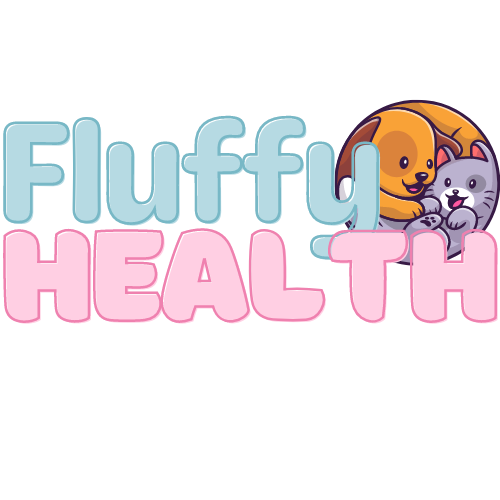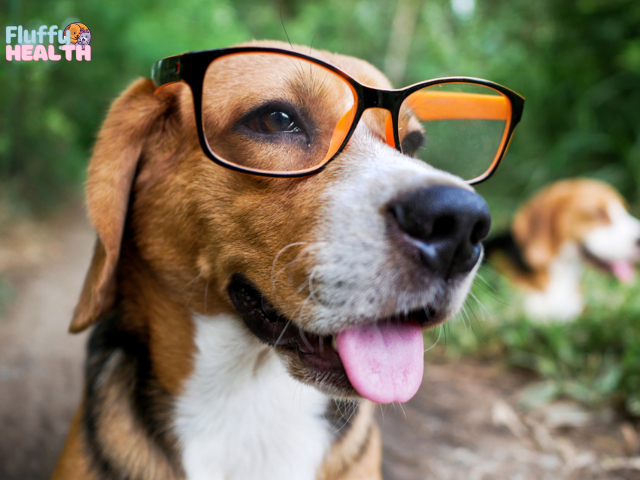How to improve my dog’s eyesight? Have you ever wondered how you can help your dog see better? Just like humans, dogs’ eye health is important for their happiness and well-being. Many dog owners may not know that simple changes in lifestyle and diet can greatly improve their dogs’ eyesight.
As a caring dog owner, your goal is to provide the best care for your furry friend. This includes keeping their eyes healthy throughout their life. Good eyesight helps dogs move around, play, and stay independent.
In today’s article, we will look at important information about your dog’s vision. First, we’ll explain how a dog’s eyes work and how dog vision differs from human vision. Next, we’ll cover common eye problems in dogs, like cataracts, glaucoma, and infections. We will also discuss their symptoms and how to prevent them.
A big part of keeping your dog’s eyes healthy is their nutrition. We will highlight important nutrients and foods that help eye health, such as omega-3 fatty acids, antioxidants, and vitamins A, C, and E. By adding these to your dog’s diet, you can help improve their vision and overall health.
Let’s explore effective ways to help your dog see the world more clearly and enjoy a happy, energetic life!
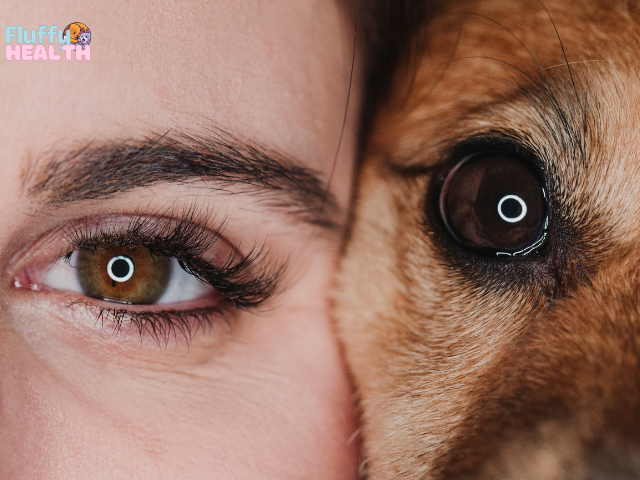
Table of Contents
Understanding How Your Dog’s Eyes Work
As a dog owner, it is important to understand how your dog sees the world. While dogs and humans have some similarities in their eyesight, there are significant differences that can affect your dog’s behavior and needs.
Dogs have more rod cells in their retinas, which helps them see better in dim light. However, they cannot see a wide range of colors; they mainly see shades of blue and yellow. This means their vision can influence how they interact with their surroundings and recognize objects or other animals.
By learning about these differences, you can better care for your dog’s eyes. Make sure to take your dog for regular vet check-ups to monitor their eye health. Create a safe environment free from hazards, and pay attention to how they respond to visual stimuli that may be overwhelming for them. Understanding your dog’s vision will help improve their quality of life and strengthen the bond you have with them.
Differences Between Human & Canine Vision
Dogs see colors differently than humans. While we can see a wide range of colors because we have three types of color receptors, dogs mainly see blue and yellow. They cannot tell reds and greens apart, making their world look less colorful than ours.
Dogs, however, are better than humans at seeing in low light. They have more light-sensitive cells, called rods, in their eyes, which helps them see well in dim conditions. This ability is useful for hunting and being active at night.
Most dogs do not see as sharply as humans, but some breeds, like Labradors, have good eyesight that can be similar to ours. Dogs also excel at detecting motion. Their eyes have special cells that help them notice even small movements. This skill is important for their natural hunting and survival instincts.
| Visual Characteristic | Human | Dog |
|---|---|---|
| Color Vision | Trichromatic (three cone types) | Dichromatic (two cone types) |
| Visual Acuity | 20/20 | 20/75 (varies by breed) |
| Night Vision | Limited | Superior (6 times more sensitive) |
| Motion Detection | Limited | 10-20 times more sensitive |
Factors That Affect a Dog’s Eyesight
Many things can affect a dog’s vision, including breed, age, and health. Older dogs are more likely to have eye problems like cataracts, glaucoma, or retinal issues. Regular visits to the vet are very important because they help spot and treat eye conditions early, which can improve your dog’s quality of life.
The shape of a dog’s face impacts how well they see. For example, breeds with long noses, like Greyhounds or Collies, usually have better distance vision and can see moving objects from far away. In comparison, dogs with short noses, like Bulldogs or Pugs, often have a wider field of vision but may find it difficult to judge distances accurately. Knowing these differences can help dog owners arrange their homes to suit their pets’ needs, such as moving furniture to prevent accidents.
Understanding your dog’s eye health also helps you care for them better. Feeding your dog a balanced diet with nutrients like omega-3 fatty acids, antioxidants, and vitamins A and E can support their eye health and possibly prevent some age-related issues. Regular check-ups with the vet can improve your knowledge of your dog’s eye condition and lead to better prevention or treatment options.
In summary, monitoring your dog’s health, providing good nutrition, and guaranteeing regular vet visits will help your dog see well and enjoy a better life throughout its years.
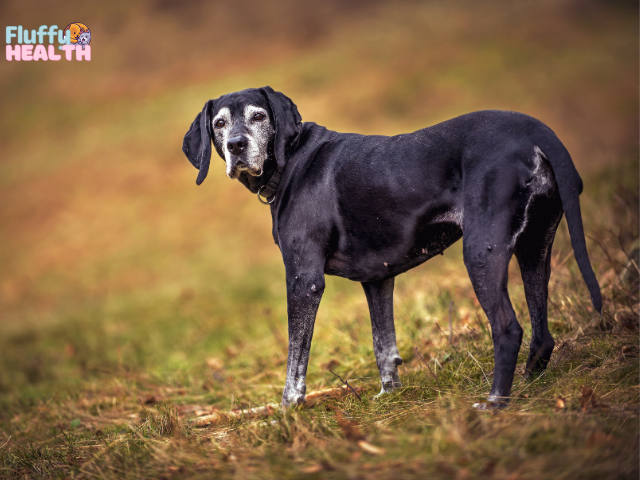
Assessing Your Dog’s Eye Health
Pay attention to your dog’s eyes. They are important for your pet’s health and happiness. Knowing what healthy eyes look like can help you spot problems early, which is key to protecting your dog’s vision. Healthy dog eyes should be bright and clear, without redness, swelling, or discharge.
Regular eye check-ups can catch issues like cataracts or conjunctivitis before they worsen. With millions of dogs in America, taking care of their eyes is an important assignment for dog owners. By watching your dog’s eye health, you greatly improve their quality of life and help them enjoy their daily activities with clarity and confidence.
Signs of Healthy Eyes in Dogs
Look for these signs of healthy eyes in your dog:
- Clarity and Brightness: Healthy eyes should be clear and bright. They should not be cloudy, discolored, or have unusual discharge.
- Pupil Size: Both pupils should be the same size. Different sizes can indicate health problems, including issues with the nervous system.
- Surrounding Eye Tissue: The area around your dog’s eyes should be white and free from redness or irritation. Any discoloration or swelling might mean allergies or infections.
- Lower Eyelid Appearance: The lining of the lower eyelid should be a healthy pink color. If it looks red or white, it may signal inflammation or other health issues.
- Excessive Tearing and Crust: There should not be too much tearing, which can cause crust to build up in the corners of the eyes. A little tear production is normal, but too much may indicate irritation or infection.
Warning Signs of Eye Problems
Dogs can have vision problems that may not be obvious without careful observation. Watch for these signs and see a veterinarian if you notice any of them:
- Cloudy Eyes: If you see a hazy look in your dog’s lenses, this could mean cataracts or other eye issues.
- Uneven Pupils: If one pupil is larger or smaller than the other, it might indicate a health problem, possibly related to the nervous system.
- Prominent Third Eyelid: A noticeable third eyelid might signal that your dog is uncomfortable or has eye irritation.
- Excessive Tears or Discharge: Any abnormal tearing or discharge could mean an infection, allergies, or other eye problems.
- Eye Rubbing or Squinting: If your dog rubs their eyes frequently or squints, it might indicate irritation or pain.
- Behavior Changes: Look for changes in how your dog behaves. Hesitating in familiar places, avoiding eye contact, or seeming confused may suggest vision loss or other health issues.
Many dogs start to develop cloudy lenses around age six, and their night vision often gets worse as they age. Regularly checking your dog’s eyes and behavior can help identify problems early, allowing for quick veterinary care.
Regular Veterinary Check-Ups
Regular vet visits are important for your dog’s eyes. Your vet will check for problems and watch for changes. Here are some facts:
| Statistic | Value |
|---|---|
| Percentage of pet owners who bathe their dogs every month | 30% |
| Average amount dog owners spend on supplies (excluding food) for their pets | $109 |
| Percentage of dog owners who find having a pet more expensive than anticipated | 50% |
| Ideal timeframe for a vet visit when a dog experiences eye troubles | Within 24 hours |
Regular vet visits and quick action help your dog’s eyes stay healthy. Remember, early care is very very important for your dog’s vision.
Protecting Your Dog’s Eyes From Injury
Keeping your dog’s eyes safe is very important as a loving dog owner. Dogs are curious and adventurous, which can put them at risk for eye injuries. One common situation is when dogs stick their heads out of car windows. This can expose their eyes to wind, debris, and possible impacts, leading to injuries that could affect their vision.
Impact injuries are a serious concern and can damage a dog’s eyes. These injuries often happen during car rides when sudden stops or bumps can cause troubles. When dogs play outdoors, they might also experience flying objects like sticks or balls that can hit their eyes. It’s important to stay alert to these dangers to help prevent injuries.
Debris injuries are another risk to your dog’s eye health. While exploring outside, dogs can face dust, pollen, and small particles like seeds or sand that can hurt or irritate their eyes. This often happens during hikes, runs in fields, or fetch games in the park. Check your dog’s eyes regularly for signs of irritation, redness, or tearing to catch any problems early.
To protect your dog, consider getting high-quality protective eyewear, like specialized dog goggles. These goggles can improve your dog’s vision by reducing glare and blocking harmful UV rays.
They also provide a barrier against flying debris and irritants. This is especially helpful for dogs with existing eye conditions or those recovering from eye surgeries, as the goggles can assist in healing.
By taking these steps and using protective eyewear, you can considerably lower the risks to your dog’s eyes while still allowing them to enjoy their outdoor activities safely.
| Type of Eyewear | Features | Benefits |
|---|---|---|
| Rex Specs K9 Eyewear™ | Ski goggle design, large spherical lens, UV protection, stable fit | Full range of view, excellent UV protection, suitable for active dogs |
| Optivizor™ | Soft, clear PVC, welding mask style, Velcro collar and chin strap | Eye and face protection, comfortable fit |
| E-collars (rigid plastic) | Buster ClicTM, Kong EZ CollarTM, VETVIEWTM | Classic protection for corneal injuries or post-surgery, allows eating, sleeping, and drinking |
| E-collars (soft) | Comfy ConeTM, flexible and cushioned | Comfortable alternative to rigid e-collars, but can obstruct vision if crushed |
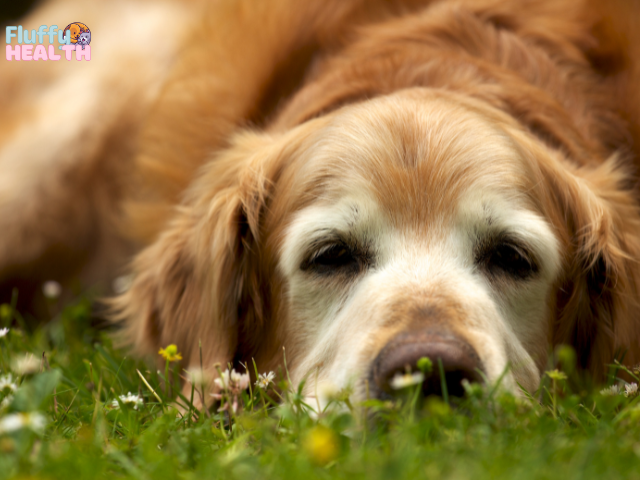
Grooming & Hygiene For Optimal Eye Health
Keeping your dog’s grooming and hygiene in check is important for their eye health. Regularly trimming the hair around your dog’s eyes helps improve their appearance and prevents hair from irritating their eyes.
Cleaning their eyes regularly is also important to remove any discharge or debris that could cause infections. These steps help keep your dog’s vision clear and lower the risk of problems. You can help your dog stay comfortable and healthy by focusing on these grooming tasks.
Trimming Hair Around the Eyes
Dogs with long hair around their eyes need regular grooming to stay healthy and comfortable. Grooming is important because hair can block their vision and cause irritation or injury.
When trimming their fur, use round-tipped scissors to avoid accidentally scratching their sensitive eyes. Work slowly and take your time to make sure grooming is safe. It helps to have another person hold your dog gently in place to prevent any sudden movements that could cause accidents.
By keeping the hair trimmed, you stop strands from getting into their eyes, which can be uncomfortable or even lead to serious problems. Regular grooming not only keeps their eyes clear but also helps their overall eye health, so they can see well and feel comfortable.
Cleaning Your Dog’s Eyes
Cleaning your dog’s eyes is very important in keeping them healthy, which is important for their overall well-being. Regular checks and cleanings can help prevent problems and discomfort. If you see that your dog has runny eyes or discharge, take action quickly.
To clean your dog’s eyes, follow these steps:
- Use a Damp Cotton Ball: Take a clean cotton ball and wet it with water. This helps gently remove debris without causing irritation.
- Wipe Carefully: Start at the corner of the eye and gently wipe outward. This clears away discharge and reduces the chance of touching the eyeball, which could hurt.
- Be Gentle: Always be soft when touching their eyes. Dogs can be sensitive, and a gentle approach will help keep them calm.
Here are some extra tips to keep your dog’s eyes healthy:
- Prevent Infections During Baths: When you bathe your dog, rinse their eyes gently with fresh water. This helps wash away dirt or soap that can irritate their eyes and reduce infection risks.
- Recognize Warning Signs: Watch your dog’s behavior. If they blink a lot or paw at their eyes, it may mean they are in pain or have a problem that needs a vet.
- Monitor Eye Discharge: Pay attention to any discharge. Watery eyes might mean allergies, while thick white or gray mucus can mean dry eyes. Yellow or green discharge often means an infection that needs a vet’s attention.
If your dog’s eyes keep having problems or discharge, visit a vet. They can examine your dog, find the problem, and suggest treatments. Regular check-ups help keep your dog’s eyes healthy and ensure they are comfortable and happy.thy.
| Grooming Task | Frequency | Benefits |
|---|---|---|
| Trimming hair around eyes | As needed, typically every 2-4 weeks | Prevents eye irritation and infection |
| Cleaning eyes with fresh water | During every bath | Helps prevent infection |
| Monitoring for excessive discharge or irritation | Daily | Allows for early detection and treatment of eye problems |
By doing these grooming and hygiene tasks, you help keep your dog’s eyes healthy. This will make sure they have a clear vision for their daily life.
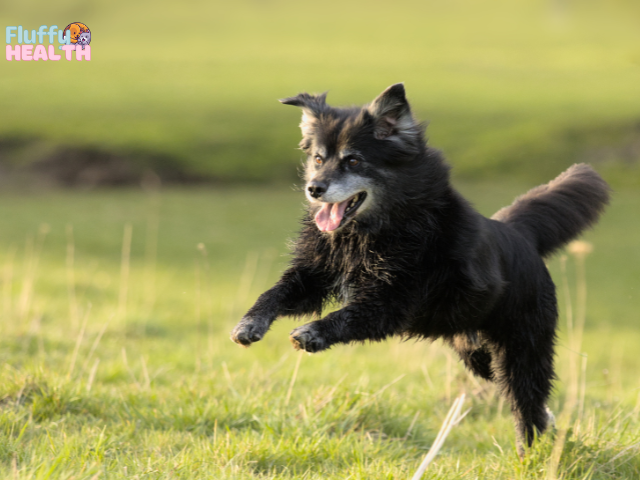
How To Improve My Dog’s Eyesight Through Diet?
A balanced diet is important for your dog’s overall health, especially for their eyes. Foods high in vitamins A, C, and E, as well as antioxidants, can improve your dog’s vision.
Leafy greens like spinach and kale are good sources of lutein, which helps eye health. Adding carrots, sweet potatoes, and blueberries to your dog’s meals can also provide vital nutrients that protect against age-related eye problems, like cataracts and retinal issues.
Feeding your dog a diet rich in these nutrients can improve its vision and lower the risk of serious eye conditions as it ages. Always check with your veterinarian to ensure your dog’s diet meets its specific health needs.
Antioxidant-Rich Foods for Eye Health
Antioxidants are important nutrients that help protect your dog’s eyes from damage and improve their vision and overall eye health. Feeding your dog specific foods high in antioxidants can greatly benefit their eyesight. Here are some excellent options:
- Carrots and Sweet Potatoes: These vegetables are rich in beta-carotene, an antioxidant that the body converts into vitamin A. Vitamin A is crucial for good vision, especially in low light, as it helps the retina work properly. Adding these foods to your dog’s diet can improve their night vision and eye health.
- Leafy Greens, Like Spinach and Kale: These greens are high in lutein and zeaxanthin, which protect the retina from harmful blue light and oxidative stress from sunlight. Eating leafy greens regularly may lower the risk of cataracts and other age-related eye problems, supporting long-term eye health.
- Blueberries: These small fruits are packed with vitamin C and antioxidants. They help fight oxidative stress that can damage cells and cause diseases, including eye issues. Blueberries also have anti-inflammatory properties that promote overall health.
- Broccoli: This vegetable contains beta-carotene, lutein, zeaxanthin, and vitamin C. These nutrients work together to protect the eyes from damage and boost the body’s defenses. You can add broccoli to your dog’s meals for eye health benefits and other nutrients.
- Red Bell Peppers: Crunchy and colorful, red bell peppers are full of vitamin C, beta-carotene, and lutein. These nutrients support healthy eyes and may help prevent cataracts. The antioxidants in red bell peppers also help strengthen the immune system and meet your dog’s daily nutritional needs.
By including these nutritious foods in your dog’s diet, you can help improve their eye health and avoid potential vision problems as they age. Always talk to your veterinarian before making major changes to your pet’s diet to guarantee their specific nutritional needs are met.
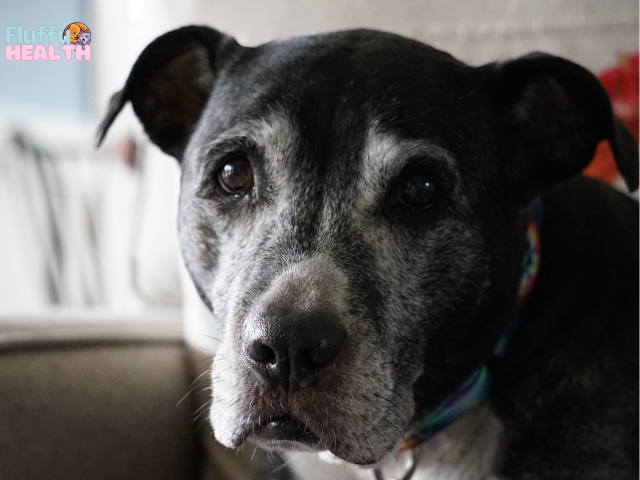
Omega-3 Fatty Acids and Eye Function
Omega-3 fatty acids are essential for keeping your dog’s eyes healthy. They are especially good for the retina and can help prevent dry eyes. Adding omega-3 fatty acids to your dog’s diet can improve their eye health as they grow older. Here are some great sources of omega-3s to consider:
- Fatty Fish: Fish like salmon, mackerel, and sardines are high in omega-3 fatty acids, especially EPA and DHA. These nutrients have anti-inflammatory effects that protect the eyes and may help prevent vision loss as dogs age. Regularly including fatty fish in your dog’s meals can improve their eye function and overall eye health.
- Fish Oil Supplements: If you can’t easily include fish in your dog’s diet, fish oil supplements are a good option. They provide a strong dose of omega-3 fatty acids and can meet your dog’s daily needs without preparing fresh fish. Just be sure to choose high-quality supplements made for pets and follow the suggested dosage.
- Flaxseed and Chia Seeds: For a plant-based source of omega-3s, consider flaxseed and chia seeds. These seeds are rich in ALA, a type of omega-3 fatty acid. You can add ground flaxseed or whole chia seeds to your dog’s food to increase their omega-3 intake. Start with small amounts to prevent digestive issues.
Offer a variety of foods to give your dog a balanced diet. This will provide omega-3 fatty acids and other important nutrients.
But always talk to your veterinarian about the best diet for your dog based on their age, breed, activity level, and health conditions. A customized diet will help support your dog’s overall health and longevity.
| Nutrient | Food Sources | Benefits for Eye Health |
|---|---|---|
| Beta-carotene | Carrots, sweet potatoes, spinach, broccoli | Supports night vision and retinal function |
| Lutein and Zeaxanthin | Leafy greens, eggs, red bell peppers | Protects eyes from sun damage and reduces risk of cataracts |
| Vitamin C | Blueberries, broccoli, red bell peppers | Combats oxidative stress and prevents age-related eye diseases |
| Omega-3 Fatty Acids (EPA and DHA) | Salmon, fish oil supplements, flaxseed, chia seeds | Maintains healthy retinal function and prevents dry eye syndrome |
Supporting Senior Dogs With Vision Loss
As your dog gets older, their view of the world may change. About 60% of older dogs have some vision loss, which can make it hard for them to get around.
This change in sight can be hard to notice or it may be very clear, and it might cause your dog to feel confused or scared.
With your love and support and a few changes in their daily routine, your senior dog can still have a happy life. You can help by keeping furniture in the same places, using tactile markers, and giving more verbal cues. These things can help your dog feel safer. Also, gentle exercise and mental activities can improve their overall well-being. Your patience and care during this time are very important for their quality of life.
Adapting to Age-Related Changes in Vision
As dogs get older, you might see changes in their behavior. They may become clumsier and more easily startled by sudden movements or noises.
These signs could mean that your dog has vision problems. If you notice these changes, it’s important to take your dog to the veterinarian for an examination.
Your vet may suggest seeing a veterinary ophthalmologist, a specialist in pet eye health. They can check your dog for issues like cataracts, which make the lens of the eye cloudy, or glaucoma, which increases pressure in the eye and can lead to blindness if not treated.
In addition to medical treatments like surgery or medication, it’s important to support your senior dog’s other senses. Helping them with their sense of hearing and touch can improve their quality of life.
You can choose toys that make noise, such as squeaky or crinkle toys, which make it easier for them to find and play with their toys. Also, consider toys with different textures, like rubber or various fabrics, to provide stimulation and comfort.
By taking these steps, you can help your senior dog stay happy and engaged, even with vision challenges.
Creating a Safe Environment for Visually Impaired Dogs
To keep your dog safe, make some changes at home:
- Keep your home layout the same. It helps your dog feel secure.
- Use ramps or stairs for furniture. It’s safer for them.
- Put up gates at stairs to stop falls.
- Light up dark areas. It helps them see better at night.
- Make a cozy spot for them to relax when they’re tired.
Keep a regular routine for your dog. It makes them feel safe. Let them do things they love, but help them if they need it. Being patient and making these changes can also help your dog stay happy. Your love is important to their happiness and well-being.
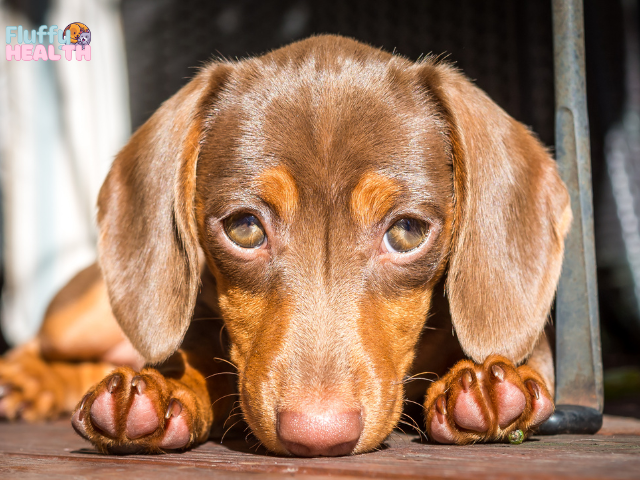
Eye Supplements & Vitamins For Dogs
Another way to help your dog’s eyes is by adding eye supplements to their diet. These supplements help improve their eyesight. Look for products with antioxidants, omega-3 fatty acids, and vitamins.
Antioxidants like vitamins C and E protect your dog’s eyes. Vitamin C keeps the lens safe from UV damage. Vitamin E protects cells from damage. Omega-3 fatty acids, especially DHA, are key for dog eyes. They help the eyes work well. Zinc helps keep the eyes healthy.
Choose eye supplements with natural ingredients. NHV eye supplements have:
- Bilberry, which improves blood flow
- Gingko Biloba, for better blood flow
- Wheatgrass, rich in vitamin A
- Turmeric, for inflammation and antioxidants
- Oregon grape, for vision improvement
Puppies can start eye supplements like OcuLove at four months. The dosage depends on their weight, as shown in the table below:
| Pet Weight | Dosage |
|---|---|
| Under 20 lbs | 0.5 mL twice daily |
| 20-50 lbs | 1 mL twice daily |
| Over 50 lbs | 1.5 mL twice daily |
Always talk to your vet before starting new supplements. This is very important for pregnant or nursing dogs. Working with your vet helps keep your dog’s eyes healthy for a long time and reduces any unwanted mistakes.
Recognizing Common Eye Conditions In Dogs
As a dog owner, knowing about eye problems is key. Spotting signs early helps get treatment fast. This can stop vision loss. We’ll talk now about three common eye conditions: cataracts, glaucoma, and progressive retinal atrophy (PRA) in dogs.
Cataracts
Cataracts are a common eye problem in dogs that cause the eye’s lens to become cloudy. This cloudiness can make it hard for a dog to see and may lead to partial or complete blindness. Some breeds have a higher chance of developing cataracts due to genetic factors.
Besides genetics, several other things can cause cataracts in dogs. Age is a major factor; older dogs are more likely to get them.
Diseases like diabetes can also increase the risk since high blood sugar levels can harm the eye’s lens. Eye injuries or infections that cause inflammation can also lead to cataracts.
When a dog develops cataracts, its vision can get worse, which can affect its quality of life. Often, surgery is needed to restore vision. This surgery involves removing the cloudy lens and, in some cases, replacing it with an artificial lens.
With the right care and treatment, many dogs can regain their sight and feel better overall.
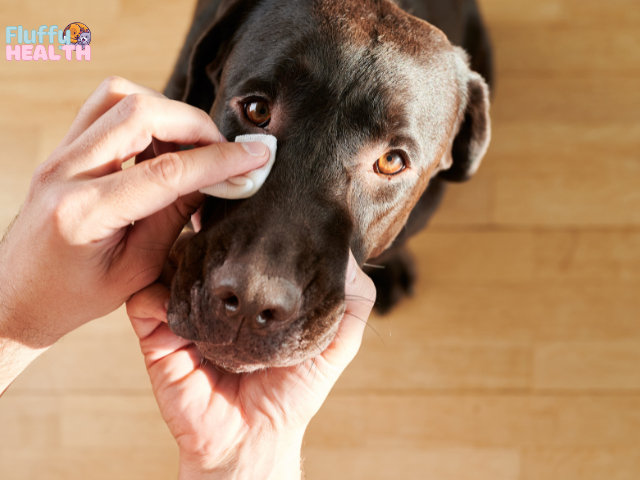
Glaucoma
Glaucoma occurs when the eye cannot drain its fluid properly, causing pressure to build up inside the eye. This higher pressure can lead to pain and damage to the eye.
In dogs, symptoms of glaucoma can include eye pain, which may show as squinting or being sensitive to light, redness in the eye, and a cloudy look to the cornea. These signs mean that the pressure is harming the eye and its internal structures.
If glaucoma is not treated quickly, it can cause serious problems. The eyes may swell and become larger, leading to more pain for the dog.
In severe cases, if the eye is damaged beyond repair, the vet may need to remove the eye to relieve pain and prevent suffering.
To treat glaucoma, vets usually prescribe medications to lower eye pressure, such as eye drops or oral drugs. Sometimes, surgery may be necessary to help drain fluid better or to reduce fluid production in the eye.
Without any further explanation, detecting glaucoma early and treating it quickly is essential to prevent further complications and keep your dog’s eyes healthy.
Progressive Retinal Atrophy
Progressive Retinal Atrophy (PRA) is a genetic eye disease that mostly affects dogs and leads to vision loss over time. PRA causes the retina, the part of the eye that detects light and sends images to the brain, to deteriorate.
As the retina gets worse, dogs may have more trouble seeing, especially in low light, and may eventually become completely blind.
Currently, there is no cure for PRA. Early detection is very important because it helps dog owners manage their dog’s vision loss. Regular check-ups with a vet, especially one who specializes in eye health, can help catch early signs of PRA. During these visits, the vet may do special tests to check the retina’s health and track any changes.
It’s also important to know that certain dog breeds are more likely to get PRA. By keeping a close eye on your dog’s eye health and getting regular veterinary care, you can help improve your pet’s quality of life as it deals with vision loss.
| Eye Condition | Symptoms | Treatment Options |
|---|---|---|
| Cataracts | Cloudy appearance in the eye, vision impairment, or blindness | Surgical removal of the cloudy lens, artificial lens placement |
| Glaucoma | Eye pain, redness, cloudiness, dilated pupil | Medications to reduce fluid production, surgery in severe cases |
| Progressive Retinal Atrophy (PRA) | Gradual vision loss, eventual blindness | No cure, regular check-ups for early detection and management |
Breeds Prone To Eye Problems
Some dog breeds are more likely to have eye health issues. Knowing about these risks can help dog owners watch for problems and catch them early.
Cocker Spaniels, Labradors, French Poodles, and Boston Terriers often develop cataracts, clouding the eye’s lens. As we explained before, if untreated, cataracts can lead to complete blindness, and owners should look for signs of cloudiness in these breeds, especially as they age.
Labradors and Golden Retrievers can also suffer from Progressive Retinal Atrophy (PRA). As we mentioned earlier, this genetic condition damages the retina and usually starts with night blindness.
It leads to vision loss during the day and possibly total blindness within two years. Regular eye check-ups at the vet can help detect symptoms early to adjust their life as this condition has no cure.
Siberian Huskies can have various eye problems, including cataracts, corneal dystrophy, and PRA. Corneal dystrophy leads to fat buildup in the cornea, obscuring vision. Husky owners should be on the lookout for changes in their dog’s eyes or vision and seek veterinary help if needed.
Long-haired breeds like Poodles, Sheepdogs, and Maltese are particularly at risk for eye infections because their fur can trap moisture and debris.
These infections can lead to more serious problems if not treated quickly. Poodles are also at risk for Ocular Hypertension (OHA), a serious condition that can affect their vision over time.
Collie breeds, such as Border Collies, Shetland Sheepdogs, and Australian Shepherds, can develop Collie Eye Anomaly (CEA). This genetic issue can cause retinal and eye malformations that might lead to blindness. Regular veterinary check-ups can catch this condition early.
Boston Terriers, known for their big, expressive eyes, face a higher risk of several eye problems, including cherry eye, cataracts, and glaucoma. Cherry eye appears as a bulge in the corner of the eye and may need surgery. Quick treatment is essential to avoid serious damage.
Great Danes can get entropion, which causes the eyelids to roll inward against the eyeball. This condition can cause irritation and serious eye issues like corneal ulcers. Often, surgery is needed to correct the eyelids and protect the dog’s vision.
By knowing about these potential eye problems linked to specific breeds, dog owners can take steps to ensure their pets get timely veterinary care. Regular eye exams and careful observation can help prevent and manage these conditions.
| Breed | Common Eye Problems |
|---|---|
| Cocker Spaniels | Cataracts |
| Labrador Retrievers | Progressive Retinal Atrophy (PRA), Cataracts |
| Golden Retrievers | Progressive Retinal Atrophy (PRA) |
| Siberian Huskies | Cataracts, Corneal Dystrophy, Progressive Retinal Atrophy (PRA) |
| Poodles | Eye Irritation, Infections, Optic Nerve Hypoplasia (OHA) |
| Collie Breeds | Collie Eye Anomaly (CEA) |
| Boston Terriers | Cherry Eye, Cataracts, Glaucoma |
| Great Danes | Entropion |
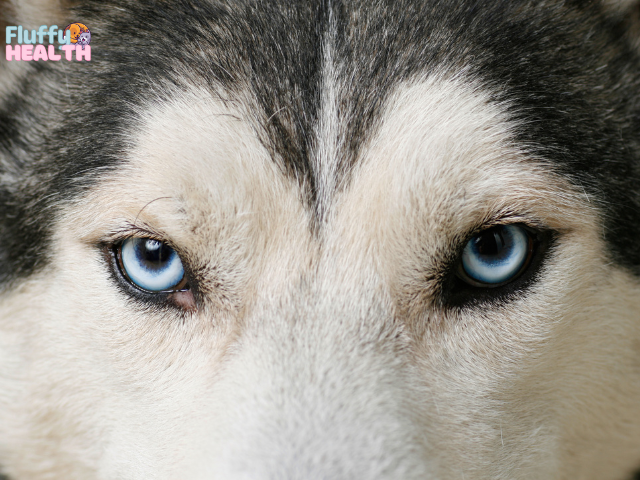
Working With Your Veterinarian To Maintain Eye Health
WRegular veterinary check-ups are important for spotting health issues in your dog early. During these visits, your veterinarian will thoroughly examine your dog’s eyes to look for problems like cataracts, which can blur vision, and dry eye syndrome, which occurs when there isn’t enough tear production, causing dryness and discomfort.
Your veterinarian can also provide helpful advice on choosing the right diet and making lifestyle changes to improve your dog’s eye health.
They might recommend adding nutrient-rich foods like kale and sweet potatoes to your dog’s meals. These foods are full of vitamins and antioxidants that help maintain healthy eyes and overall well-being.
Also, omega-3 fatty acids are essential for good vision. Foods high in omega-3s, such as sardines and salmon, can be great for your dog’s diet. These fatty acids support retinal health and can help prevent age-related eye problems, keeping your dog’s eyes healthy as they get older.
In summary, regular veterinary care, along with a healthy diet and lifestyle, can significantly benefit your dog’s eye health and improve their quality of life.
| Age | Recommended Check-Up Frequency |
|---|---|
| Puppies (birth to 1 year) | Every 3-4 months |
| Adult dogs (1-7 years) | Annually |
| Senior dogs (7+ years) | Every 6 months |
If your dog’s vision changes, like squinting or bumping into things, see your vet. Many eye problems can be fixed if caught early. So, don’t wait to get help. Your vet is your best friend. Together, you can keep your dog’s vision on top-notch. This way, your dog can live a happy life.
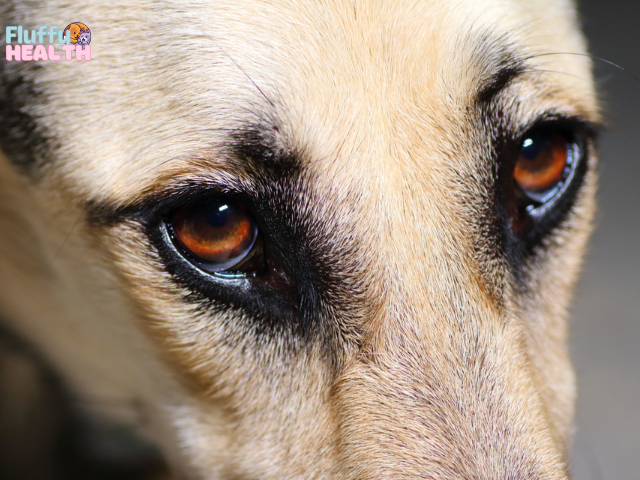
How To Improve My Dog’s Eyesight? The Conclusion
How to improve my dog’s eyesight? The answer to this question is simple, by taking care of your dog’s eye health and understanding what affects your dog’s vision helps you provide better care.
Also, scheduling regular eye exams with your veterinarian to catch any potential issues early is, as you have already concluded, by far the most important step to prevent eye damage.
You can also gently clean your dog’s eyes to prevent dirt and discharge, which helps keep their vision clear and comfortable.
Watch your dog’s behavior for signs of eye problems. Look for symptoms like redness, unusual discharge, squinting, or sensitivity to light. If you notice any of these signs, it’s important to see your veterinarian right away. They can thoroughly examine your dog’s eyes and suggest suitable treatments or preventive measures.
Another important point we discussed is that as your dog gets older, their vision might change. You may need to make their living space safer and easier to navigate.
Remove any obstacles that could cause accidents, and ensure there is good lighting where your dog spends time. Keep in touch with your veterinarian about your dog’s eye health, as they can help you make any necessary adjustments to improve your dog’s quality of life.
Overall, early detection and treatment are the most important steps to protecting your dog’s vision.
